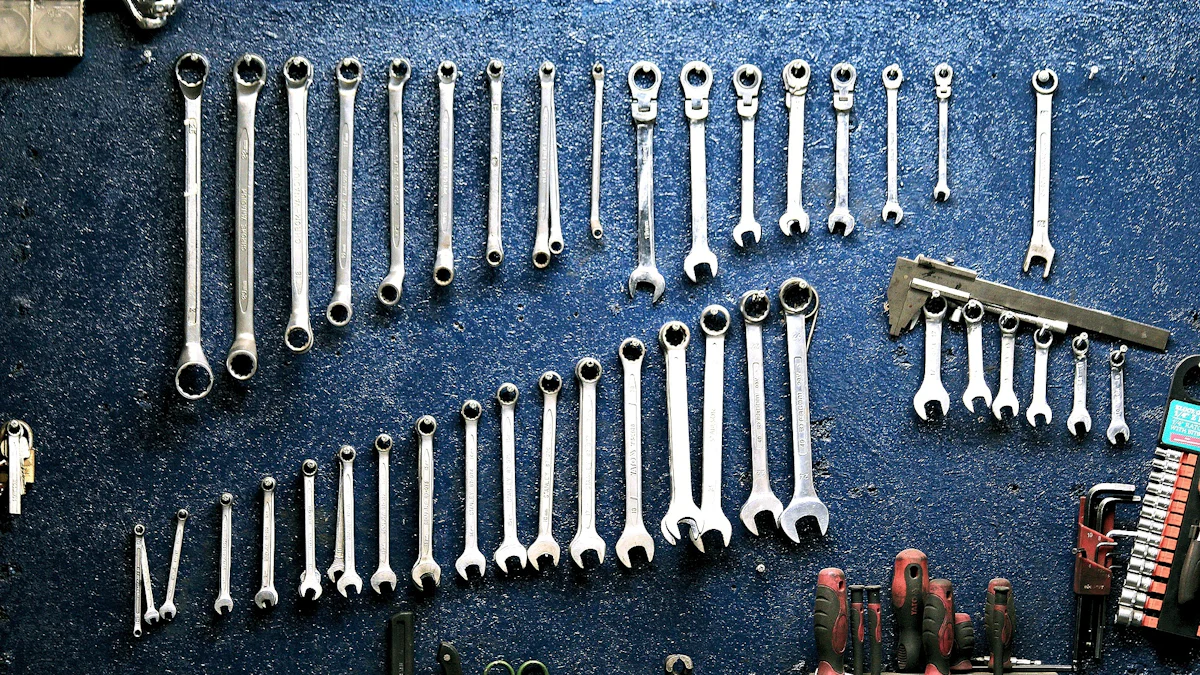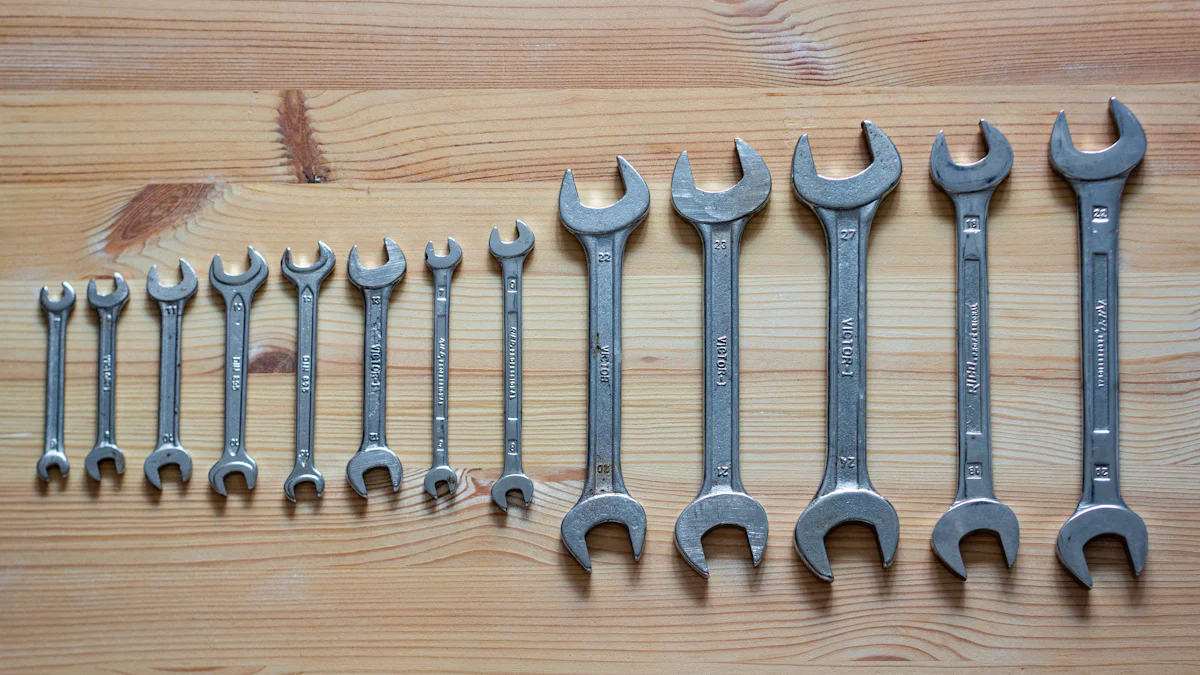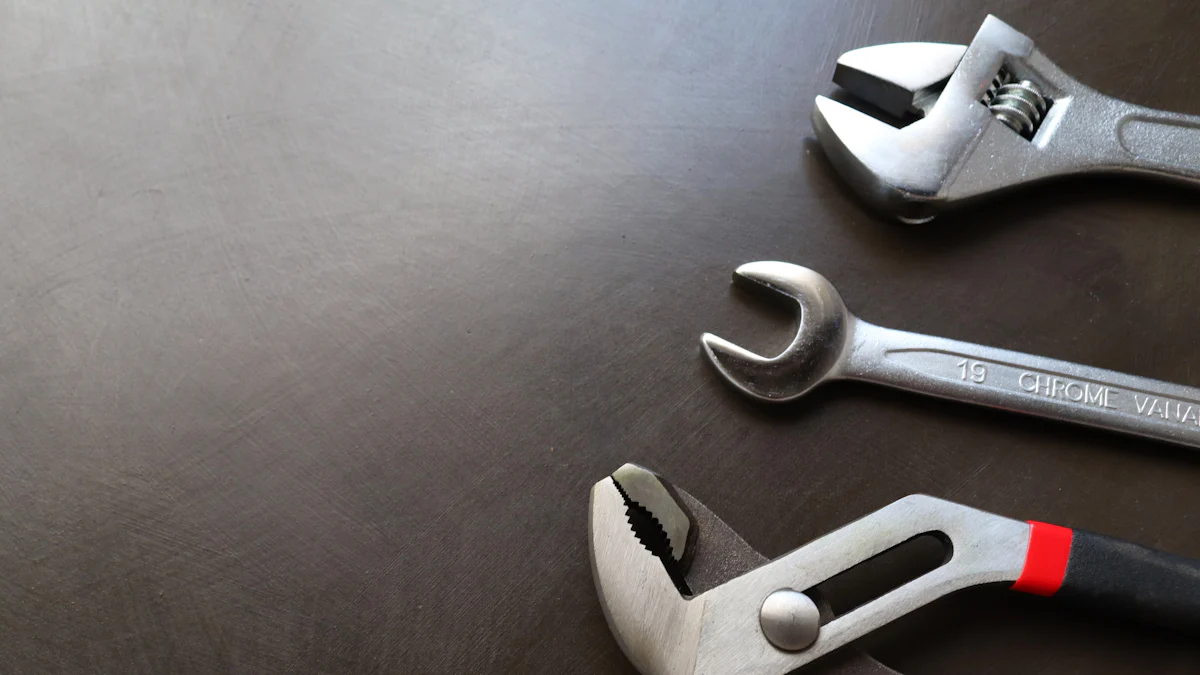
When delving into the wrench vs spanner debate, understanding the significance of Inches versus Metric measurements becomes paramount. The blog aims to shed light on these mechanical tools’ distinctions and guide readers through their practical applications. By exploring the nuances between inches and millimeters, readers will gain a deeper appreciation for precision in handling metric steel bolts. Let’s navigate through this insightful exploration together.
Conversion Chart Wrench Spanners

When delving into the realm of Conversion Chart Wrench Spanners, one must grasp the intricate details of measurement systems. The comparison between Inches and Metric unveils a world where precision reigns supreme. Understanding these systems is not merely an option but a necessity for those navigating the mechanical landscape.
Understanding Measurement Systems
Inches vs. Metric
Inches, a relic of imperial measurements, stand in stark contrast to the modern elegance of the metric system. While inches rely on fractions and divisions, millimeters offer a decimal simplicity that streamlines precision work.
Importance of Accurate Conversion
The importance of accurate conversion cannot be overstated. A minor miscalculation can lead to significant errors in projects, jeopardizing structural integrity and functionality. Precision is not just a virtue; it’s a requirement in the world of engineering.
Conversion Chart Wrench Spanners
How to Use Conversion Charts
Utilizing conversion charts effectively requires more than just glancing at numbers. Engineers must interpret these charts with finesse, understanding the nuances between different units to ensure seamless transitions from inches to millimeters.
Benefits of Conversion Charts
The benefits of conversion charts extend beyond mere convenience; they are tools for accuracy and efficiency. By harnessing these charts, professionals can bridge the gap between measurement systems, ensuring that their projects meet exacting standards.
Engineering ToolBox
The Engineering ToolBox serves as a vital resource for professionals in the field of Engineering. It acts as a comprehensive repository of specialized tools and information, catering to the diverse needs of engineers across various disciplines.
Features of Engineering ToolBox
- The ToolBox offers an extensive collection of calculators, from simple unit conversions to complex engineering formulas, aiding engineers in their daily calculations.
- With a vast database of technical guides and resources, the ToolBox equips users with valuable knowledge on topics ranging from materials selection to structural analysis.
- Interactive diagrams and visual aids within the ToolBox enhance understanding, making complex concepts more accessible and facilitating efficient problem-solving.
How to Utilize Engineering ToolBox
- Navigating the ToolBox is intuitive, with a user-friendly interface that allows seamless access to its myriad features.
- Engineers can leverage the search function to quickly locate specific tools or information, streamlining their research process.
- By bookmarking frequently used tools and saving preferences, users can personalize their experience on the ToolBox, optimizing efficiency.
SketchUp Extension
The integration between SketchUp and the Engineering ToolBox revolutionizes design processes for engineers by providing direct access to essential resources within their modeling environment.
Integration with Engineering ToolBox
- The extension seamlessly embeds key functionalities of the ToolBox into SketchUp, enabling engineers to reference critical data without disrupting their workflow.
- By bridging these platforms, users can effortlessly incorporate accurate measurements and specifications into their designs, ensuring precision and adherence to industry standards.
Advantages for Engineers
- The integration enhances productivity by eliminating the need to switch between applications, fostering a more streamlined design workflow.
- Engineers benefit from real-time data updates and access to a wealth of engineering-related topics directly within SketchUp, enhancing collaboration and decision-making processes.
Wrench vs Spanner

Differences Between Wrench and Spanner
When comparing a wrench to a spanner, distinct design and functionality variations come to light. A wrench typically features a fixed size for specific tasks, offering reliability in fastening and loosening bolts. On the other hand, an adjustable spanner provides versatility with its ability to accommodate various bolt dimensions, catering to a broader range of applications.
Design and Functionality
The wrench’s design emphasizes durability and strength, ensuring optimal performance when handling bolts. Its sturdy construction allows for efficient torque application, maintaining precision in mechanical work. In contrast, the spanner’s adjustable nature grants flexibility in adapting to different bolt sizes, enhancing adaptability across diverse projects.
Regional Preferences
Across regions, preferences between the wrench and spanner vary based on practical needs and cultural influences. While North American professionals often favor the reliability of the wrench, European counterparts lean towards the versatility of the spanner, reflecting distinct approaches to mechanical tasks.
Wrench vs Spanner
Exploring the realm of practical applications unveils how each tool serves unique purposes in engineering tasks. From securing structural components to adjusting machinery settings, both the wrench and spanner play pivotal roles in ensuring precision and efficiency.
Practical Applications
Utilizing an adjustable spanner proves advantageous when working with bolts of varying sizes, eliminating the need for multiple tools. Conversely, a fixed-size wrench excels in scenarios requiring consistent torque application or where space constraints limit tool maneuverability.
Choosing the Right Tool
Selecting between a wrench and spanner hinges on understanding project requirements and desired outcomes. Assessing factors such as bolt dimensions, class of fasteners, and accessibility can guide engineers towards making informed decisions that optimize workflow efficiency.
Selecting the appropriate tool is a critical aspect of ensuring workplace safety and productivity. The right tool choice can significantly reduce injuries, enhance outcomes, save time, and boost overall efficiency. Using the correct tools is specialized and not a one-size-fits-all solution. Opting for the wrong tool can lead to decreased efficiency and increased costs. Having the proper tools is essential for preventing delays, injuries, and maintaining a safe working environment.
